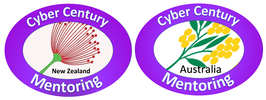|
How often do you find yourself “zoning out” in conversation? Maybe you find yourself waiting to talk next? In a situation where you need to have constant attention on what's being said, such as in a mentoring session, this can be problematic, which is why we recommend using a technique called Active Listening. Active listening involves a structured approach to listening.
If your mentoring partner appears to be uncomfortable with eye contact, this should not be taken as an offence. Rather than trying to seek eye contact from someone who avoids it, looking at their shoulder or another part of their face can help relax communication. AuthorKristine Sihto is Senior Editor and Communications Manager for CCM.
0 Comments
This week, I am busier than I have been at any other time in my life. Over the next seven weeks, I have three conferences to attend and speak at, all on different subjects - I have completed slide decks for roughly zero of those. My husband and I have just founded a company, so there's paperwork to sort, proposals to write, meetings to attend. I have three smaller networking events this week. I have several art commissions to complete. Have you ever had so many tasks on the go that you find yourself procrastinating? Too many competing priorities can lead to a state where you are unable to see the most effective path to your goals. Create a plan Effective prioritisation begins with a plan. Rather than being overwhelmed, follow these steps:
Making this plan might take time, but once you have it, you won't need to waste time wondering what to do next. Now I'm off to create a plan for my next seven weeks. Wish me luck! AuthorKristine Sihto is Senior Editor and Communications Manager for CCM. This Friday (March 29), she will be presenting at BrisSEC19 in Brisbane. She hopes to see you all there! Today was a terrible day.
Today in Christchurch, a lot of people went to pray and didn’t come home, all because someone decided they were praying for the wrong religion. I’m in Australia, but it felt like I was hearing about someone opening fire on people in a neighbouring suburb. The footage I was exposed to by news reports was extremely upsetting. Right now, I can do nothing for the victims. Due to a storm passing through Brisbane, I am sitting in the dark, literally powerless, writing this on my phone. But I can do something else. The events that occurred today were traumatic. The nature of the footage that was released today is traumatic. And there are those of us in this community that will feel that trauma acutely. I want to support those people. If you find yourself suffering mental distress due to the events of today (or in general), please speak to a doctor. If your distress is great enough to make you feel like harming yourself or others, please seek immediate medical attention. The number for Emergency Services
Helplines in New Zealand (from the Ministry of Health website):
Helplines in Australia:
Author Kristine Sihto. All opinions expressed in this post are mine and do not reflect the official view of either CCM or my employer. |



 RSS Feed
RSS Feed
